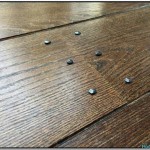Laminate flooring is a popular option for many homeowners because of its affordability, durability, and attractive look. It is also relatively easy to install compared to other types of flooring. This article will provide you with tips for laying laminate flooring that will help make your installation process go smoothly and ensure the best results.
Preparing the Subfloor
Before you start laying the laminate flooring, it is important to prepare the subfloor. This means ensuring that the surface is level and free of any debris, dirt, or other materials that could interfere with the installation. Any loose boards should also be nailed down or screwed down to ensure a secure foundation.
Installing the Underlayment
Once the subfloor is ready, you will need to install the underlayment. This is a thin foam layer that provides cushioning and helps reduce the noise from the flooring. You should make sure to use the appropriate type of underlayment for the type of laminate flooring you are installing.
Measuring and Cutting the Flooring
Once the underlayment is in place, you can begin measuring and cutting the laminate flooring. It is important to make accurate measurements to ensure that the planks fit together properly. You should also use a saw with a fine-toothed blade to ensure accurate cuts.
Laying the Flooring
Once the planks have been cut to size, you can start laying them. Start in the corner of the room and work your way out. Make sure to use spacers to ensure that the planks are spaced evenly and that they do not move when you walk on them. You should also use a tapping block and hammer to help fit the planks together.
Finishing the Installation
Once the flooring has been laid, you will need to finish the installation. This includes trimming any excess flooring and installing the flooring edging. You may also wish to seal the edges with silicone caulk to ensure a tight fit and prevent water from seeping underneath the flooring.
Caring for Laminate Flooring
Once the flooring has been installed, you should take care to maintain it properly. This means sweeping and vacuuming regularly to remove dirt and debris. You should also use a damp mop to clean the floor, but avoid using too much water. Finally, you should apply a protective coating every few years to help protect the floor from wear and tear.










/how-to-lay-laminate-flooring-1822250-09-15b00e370b304baf934b1734fa2420be.jpg)




Related Posts








